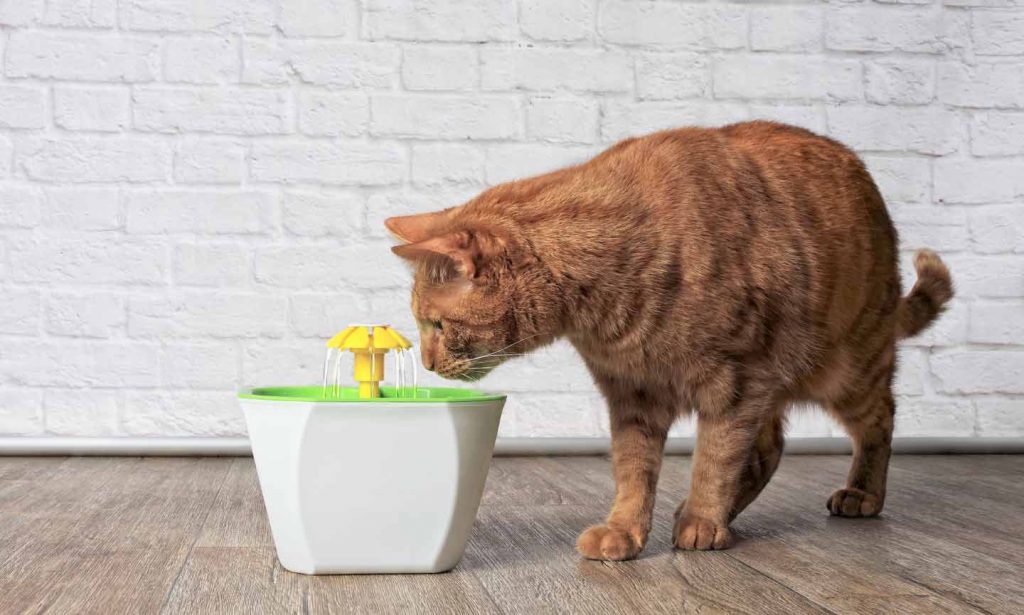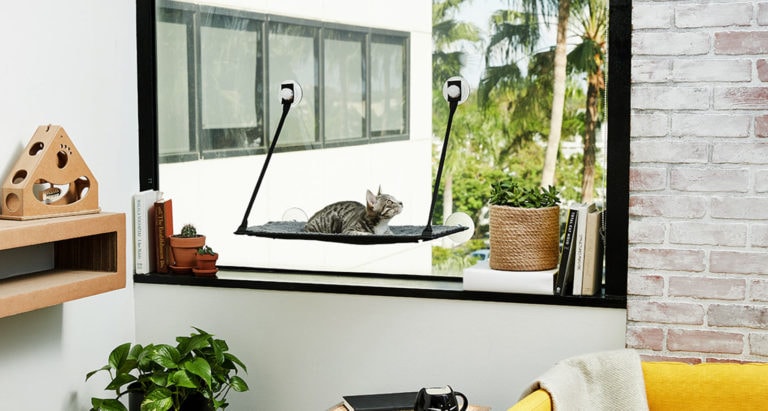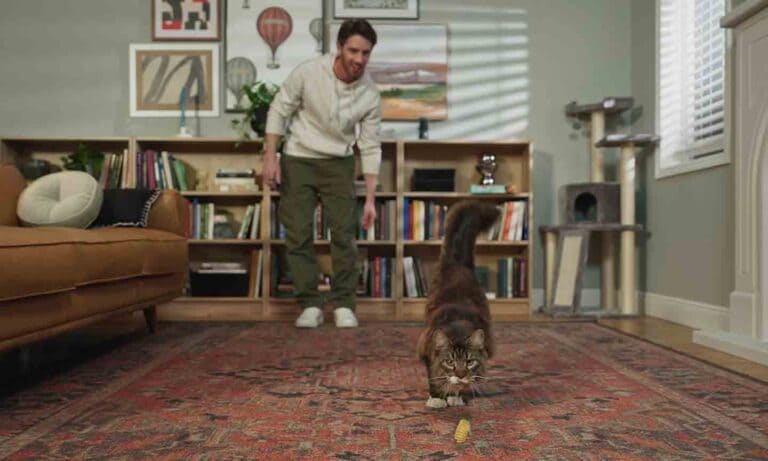If you don’t see your kitty at their water bowl often, you’re not alone. “Cats are really desert dwellers and are not programmed to drink large amounts of water,” said Judy Morgan, DVM. This trait can make your kitty less likely to spend time at their water bowl—and more at risk to cat dehydration than you might think.
Of course, cat hydration is very important. Although cats can generally function in a mildly dehydrated state, hydration is important for normal metabolic health, energy and digestion, says Stephanie Liff, DVM, medical director of Pure Paws Veterinary Care. In older cats, hydration is important to support kidney health, which often suffers as cats age. And in younger cats, water intake is essential to avoid lower urinary tract issues.
Whatever your cat’s age, there are some ways you can help increase the amount of water they get so you can better prevent cat dehydration. Here are a few suggestions.
1. Consider where your water bowl is, and the type of bowl you have.
Domestic cats can be particularly fussy when it comes to their water. Factors like where it’s placed, how fresh it is and the source it’s coming from can all detract a kitty from drinking, leaving them more vulnerable to cat dehydration.
Keep these things in mind when you're considering how to give your cat their water:
- Don't put their food near the water bowl. Cats instinctively avoid water near their food, possibly an instinct from their wild ancestors.
- Don't put their food near their litter box. You might be less likely to drink water too, if the only place you could do it was next to your toilet!
- Choose the right bowl. Cat's like wide bowls with low edges so that their whiskers don't have to touch the bowl.
- Clean the bowl regularly. Your cat's water bowl should be emptied, cleaned and filled with fresh water at least twice a day.
2. Provide a cat water fountain.
Arguably one of the most common (and potentially most fun!) ways to get your cat to drink more and ensure cat hydration is to give them a cat water fountain.
“Cats like fresh water,” says Dr. Morgan, “They are extremely sensitive to the smell of bacteria and will not drink contaminated water.” Getting a water fountain for cats is one way to ensure your cat’s drinking water stays fresh and enticing.
Plus, some cats “prefer running water or they like to play with their water,” says Dr. Liff, and a water fountain for cats allows for that.
Products like the Drinkwell 360 Stainless Steel Pet Fountain provide fun, free-flowing streams that are sure to attract your cat much better than stagnant bowls. The Petmate Pearl Replendish Waterer With Microban is similar, but uses gravity to drop water from the tank through a charcoal filter, so you’ll be assured your cat is never without fresh, filtered and delicious water, even when you are away.
3. Serve them wet food.
Feeding wet food is a great way to secretly increase your cat's water intake. In addition to the other benefits of increased hydration, “a high-moisture diet will make a more dilute urine,” says Dr. Morgan. “If the urine is more dilute, there is a lower specific gravity and less likelihood of producing crystals in the urine that can lead to obstruction.”
If you're considering switching your cat to a wet food diet, it's helpful to purchase a variety pack so you have several different flavors to try. Cats are notoriously picky about what they eat, so having multiple options is a must! Made By Nacho Cuts In Gravy Recipes With Bone Broth comes in a variety pack with three different recipes: salmon, chicken and beef. In addition to including bone broth to boost your cat's hydration, these meals are enriched with vitamins and minerals like taurine, DHA, prebiotics, Omega-3, and Omega-6 to support their overall health as well.
Learn the best way to switch your cat's food.
Important note: Dr. Liff says that cats who primarily eat a wet food diet are sometimes likely to drink less water, so don’t be alarmed if you notice your cat spending less time at their water bowl after you make the switch—it doesn't necessarily mean your kitty is more prone to cat dehydration.
4. Add extra water to their wet food.
While wet food alone will increase your cat’s water intake, if your cat requires extra water for whatever reason, Dr. Liff recommends adding water to the wet food. “Some people find that offering other liquids aside from water—like tuna juice or broths—can help increase intake, but these liquids are often salty and can have a counter effect to cat hydration as well,” she said. Talk to your vet about offering liquids besides water.
5. Pay special attention to their regular diet.
Even if you don’t feed your cat a wet food diet, you should still pay special attention to the foods you do feed them to ensure your cat stays healthy and hydrated. “Cats are carnivores and should eat high-meat diets,” says Dr. Morgan. “They don’t do well with diets high in carbohydrates, which lead to obesity, diabetes and urinary problems. A proper, species-appropriate, meat-based diet will decrease dental disease, while keeping the cat well hydrated. "Adding wet food to your cat’s regular dry food diet is even better for their health," she adds. "In fact, it’s estimated that 15,000 cats per year would not develop kidney disease if fed a high-moisture diet instead of dry cat food.” Speak with your vet if you think your cat isn’t getting enough water or is at risk of cat dehydration. You can also consult your vet if you’re interested in changing up your cat’s diet to include wet food.
Share:










